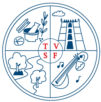In recent years, using music as a complementary medicine has gained grounds in countries like the Netherlands, USA, Australia, Japan and also Argentina, Brazil, China, and India. Indian music, known for its raga, often referred to as ‘Miracle of microtones’’; shows great potential for research, which is quite promising.
While music is universally beneficial, as plants are reported to grow well, and cows yielding more milk and the like, there appears a dire and urgent need for extending the beneficial effects of music to select population groups.
Music therapy provides a unique variety of musical experiences in an international and developmentally appropriate manner to effect changes in a child’s behavior and facilitates development of his/her communication skills, social interactions, besides developing emotional, sensory-motor, and/or cognitive skills. It enhances the quality of life in children as it makes them more cheerful and flexible to face life.
The therapy involves close relationships between a qualified therapist and child; between one child and another; between child and mother; and between the music and the practitioners.
All such relationships build a feeling of ‘belonging’, which helps in creating a positive environment and set the occasion for successful results.
Music acts as a stimulant of the child’s senses, and facilitates many developmental skills. Quality learning and participation, coordination, cooperation, team-spirit, friendly rivalry – as defined in musical genres such as ‘jugalbandhi’ etc, occur when children tamper with music naturally and frequently, without restraints.
While being highly motivating, music is also calming and relaxing. Enjoyable beta forms of music with active rhythms and quick tempo can activate the success of children by making them feel better and confident.
Music therapy can even help a child manage pain and stressful situations and overcome complexes due to physical or mental disability, if any. It can encourage socialization, self-expression, communication, and motor development.
Because the brain processes music in both hemispheres, music can stimulate cognitive functioning and may be used for remedying some speech/language skills. Children are involved in singing, listening, playing, and in creative activities associated with music, which can even include solving mathematical puzzles! The idea is that a child should be made into a better learner.
Music therapists work on developing a child’s self-awareness, confidence, readiness skills, coping skills and social behavior and may also provide pain management techniques. Therapists should explore which styles of music, techniques and instruments are most effective or motivating for an individual child and thereafter, expand upon the child’s natural, spontaneous play in order to address areas of need.
After developing realistic goals and target objectives, music therapists can plan and implement systematic music therapy treatment programs with procedures and techniques designed specifically for the individual child. Therapists should document responses, evaluate progress, and make recommendations to the family regarding progress.
Music therapy can extend enjoyable purposeful activities and resources for families to share with their children. Tensions and relaxations, questions and answers, ascending notes and descending notes – found in a musical piece can be profitably employed to stretch the children’s imagination, make them more creative in their outlook.
The therapy may also serve as a positive outlet for interaction among members of the family, thereby relieving any differences or tensions among them, providing fun activities that can include parents, siblings and extended family.
Music therapy is as efficacious and valid with older persons as with children and families. As a form of sensory stimulation, music provokes in the elderly citizens, responses due to the familiarity, predictability, and feelings of security associated with it. Elders, who have functional deficits and physical, psychological, cognitive or social functioning, find music as a dependable ‘old age companion’ par excellence. There is no generation gap, no fear of losing relationship with music, say bye separation, neglect or divorce!
Recent clinical research endorses the greater viability of music therapy even and terminally ill patients who may be resistive to other treatment approaches.
Music therapists use music to facilitate movements (especially in elders who have problems such as arthritis, etc.) and changes, or to maintain functioning or the ‘feel good’ levels, which contribute to life quality. The therapeutic intervention is again, based on individual assessment, treatment planning, and ongoing program evaluation.
In special circumstances, the therapy can be extended to bedridden patients as well to enable them ‘visualize’ the lighter side of their existence.
This article is published in Bhavan’s Journal Dec 15 2004, pages 67 to 69
Edited by Geeta Shreedar, Feb 25, 2021
